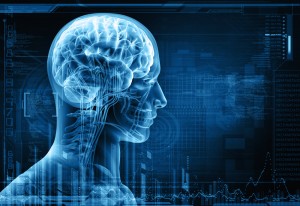How the Brain Protecting Itself Can Cause PTSD

The way the brain reacts to trauma is part of the body’s normal defense mechanisms
The Mayo Clinic defines posttraumatic stress disorder (PTSD) as a mental health condition triggered by experiencing or witnessing a terrifying event. PTSD can cause a variety of symptoms that can appear soon after the traumatic event ends or even years later. The US Department of Veterans Affairs, National Center for PTSD lists the following problems as causes of the condition:
- Combat exposureSexual or physical abuse as a child or later
- Terrorist attack
- Serious accidents, like a car wreck
- Natural disasters, like a fire, tornado, hurricane, flood or earthquake
Receiving the proper treatment for PTSD is a crucial step in recovering from the disorder. The way the brain reacts to trauma is part of the body’s normal defense mechanisms, but the brain can become stuck in an unhealthy pattern of reliving the traumatic events.
PTSD Symptoms
Most people who experience trauma go through times of difficulty. Fear, the inability to sleep, crying, withdrawal and anger are all normal responses after a terrifying experience occurs. However, with the proper support and self care, these symptoms eventually dissipate, which is not PTSD.
PTSD may begin up to three months after a traumatic event or it may surface years later. The difference between PTSD and the normal response to trauma is that symptoms of the disorder are debilitating, life changing and uncontrollable by standard coping methods. The symptoms of PTSD typically fall into three categories: re-experiencing, avoidant and hyper-arousal.
Reliving Trauma with PTSD
Re-experiencing traumatic events is caused by the brain’s effort to process the frightening memories. Normally, the brain processes memories as past events, but in the case of PTSD the brain’s memory function becomes interrupted, which causes the trauma to live just below the surface of memory. As a result, flair ups of the experience may occur, even if the event is far in the past. These flair ups can be caused by certain psychological cues, like being in a place that or with people who remind you of the trauma. Some of the symptoms of re-experiencing include the following issues:
- Intrusive thoughts
- Waking flashbacks
- Recurrent nightmares
- Intense emotional distress
- Rapid heart beat
- Sweating
- Hyperventilation
- Muscle tension
- Dizziness
- Crying
- Shaking
Seek help if you struggle with any of the aforementioned issues.
Avoidant Symptoms in PTSD
Avoidant symptoms surface due to the intense need for physical safety after a traumatic event. With this symptom, the brain attempts to protect itself from the knowledge of the trauma, which cause gaps in memory about the event and denial that it actually occurred. Some avoidant symptoms of PTSD include the following examples:
- Avoidance of sounds, sights and even objects that remind the survivor of the trauma
- Avoidance of people that trigger a memory of the traumatic event
- Loss of interest in previously enjoyable activities
- Emotional numbness or detachment from people and social situations
No single symptoms indicates PTSD, but seek help if you struggle with several of them.
Hyper-arousal Symptoms in PTSD
The body goes into a natural protective state in threatening times, so this “fight or flight” instinct is activated to protect the body from what perceives as a threat. It occurs as the brain sends messages to the rest of the body that increase blood flow to the extremities and vital organs. There is also in increase in adrenaline. In the case of PTSD, the brain is unable to return to a normal state after the threat passes, so the body is in an almost continuous “fight or flight” mode. Some of the symptoms of hyper-arousal include the following issues:
- Inability to focus
- Inability to stay asleep
- Angry outbursts
- Easily startled
- Constant fear
- Overly vigilant for danger
Again, seek help to address these problems.
Treatment for PTSD
Getting treatment for PTSD is necessary for healing. A combination of psychotherapy and medication is often used to deal with both the symptoms and causes of PTSD. Each person’s experience with PTSD is different, so the treatment must be unique to the individual. If someone is still experiencing trauma or some form of abuse is ongoing, then both problems must be addressed at the same time for healing to take place. Getting out of the dangerous situation is always your or a loved one’s first priority.
Treatment plans for PTSD include both inpatient and outpatient options. Your healthcare provider or mental health specialist will help you determine the best choice for your unique situation. The most important thing is reaching out for help.
Find Help for PTSD
Many factors determine who will get PTSD after a traumatic event occurs. Those who seek help from others after the event passes will decrease their risk of developing the disorder. If you or a loved one experienced a trauma and you think you might be suffering from PTSD, we are here for you. Call our toll-free, 24 hour helpline to speak to an admissions coordinator about available treatment options.

 We take your privacy seriously. To help ease any concerns and uncertainty about calling for drug and trauma abuse help
We take your privacy seriously. To help ease any concerns and uncertainty about calling for drug and trauma abuse help